Chess is by nature a drawn game. White has the first move advantage, but due to computers that has more or less been neutralized. It is a game full of hope and possibility. Sometimes the underdogs win, sometimes the favourites, and most of the time the sport can be called the winner. Today, the rating favourites won their games, but to say that they were easy wins would severely undermine what they had to do on the board. Being an active player myself, I know how difficult it is to win against a charged and motivated opponent. So the 4 decisive games today are an ode to the fighting spirit of the players, and one hopes that such a trend continues! Without much ado, let us get into the games now:
Georgiadis 0-1 Shankland
The young Swiss talent essayed his usual 1.e4, and Sam replied with the Sicilian. The youngster chose 6.Be3 against the Najdorf and after 6...e5 went Nf3, following the trends at the top level. As is typical in the Sicilian, once Black equalises he usually takes over, and Sam managed to win with a wonderful piece sacrifice! Here are a few of the critical moments from the game:
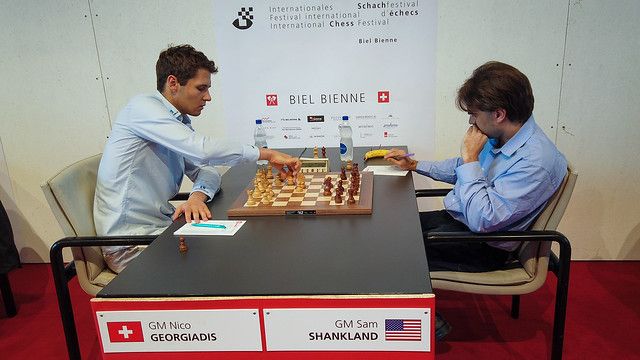
Sam's book has more often than not led him to sacrifice material for an armada of pawns! | Photo: Simon Bohnenblust / Biel Chess Festival
Georgiadis-Shankland
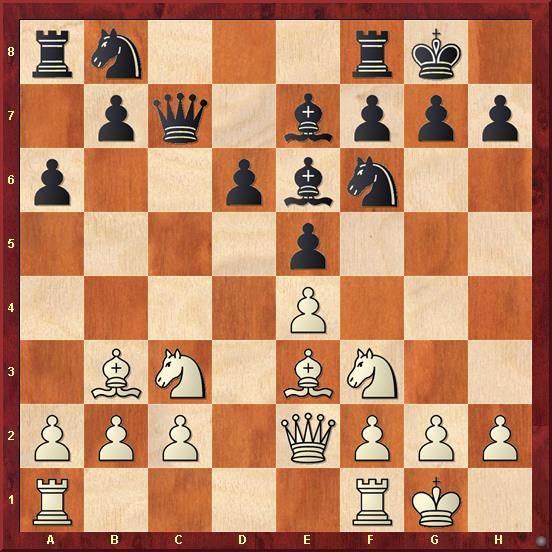
11.Qe2!? is most commonly played in this following position. I don't see how it is that good, and feel that the move 11.Nh4 is more critical (Sjugirov-Wojtaszek Batumi 2018).
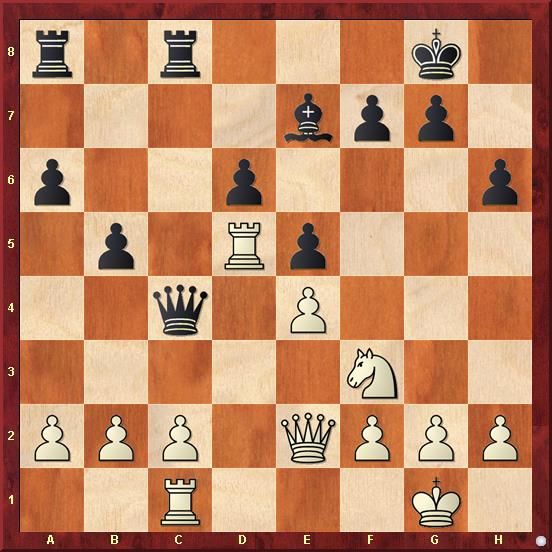
White did get the d5 square, but his lack of co-ordination means that Sam's counterplay is quick to arrive. Here, after the forced queen exchange, I am starting to like Black more and more, as d6 is not really weak, while c2 is . The rook on c1 is quite passive.
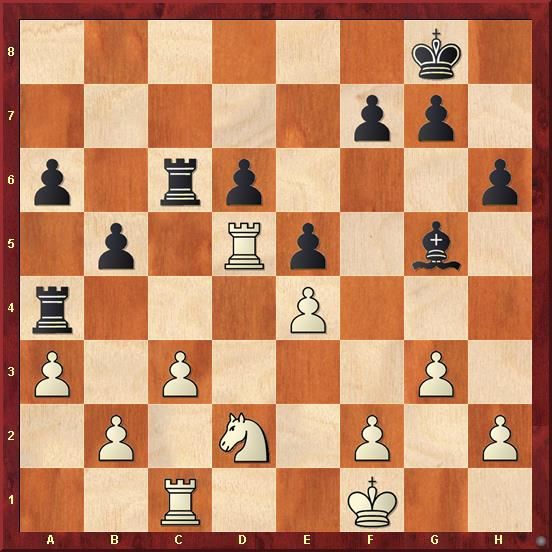
There are two kinds of sacrifices - correct ones and Tal's! Here Sam went for the interesting Rxe4! sacrificing the bishop after f4 Bxf4! gxf4 Rxf4+. Objectively if White can co-ordinate he should be ever so slightly better, but in a practical game I'd take Black all day. Nico was unable to solve all the problems at the board, and that is proof enough that Sam's idea was practically the best decision to make. As for the sacrifice - it is more Tal-like!
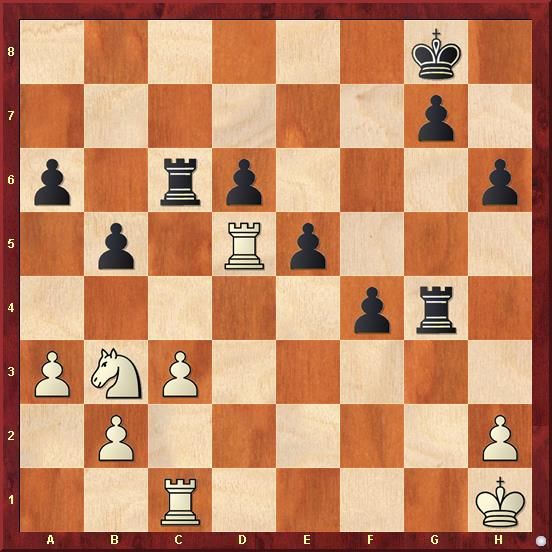
Here Nico rejected the natural Rcd1 in favour of Na5. I don't understand this decision, as chess guidelines dictate that one should mobilise the major pieces to the most active squares first and then improve the minor ones, in the endgames at least. While his game move is not really an error, his subsequent play was not the most precise, and soon he had to find some only moves to stay alive.
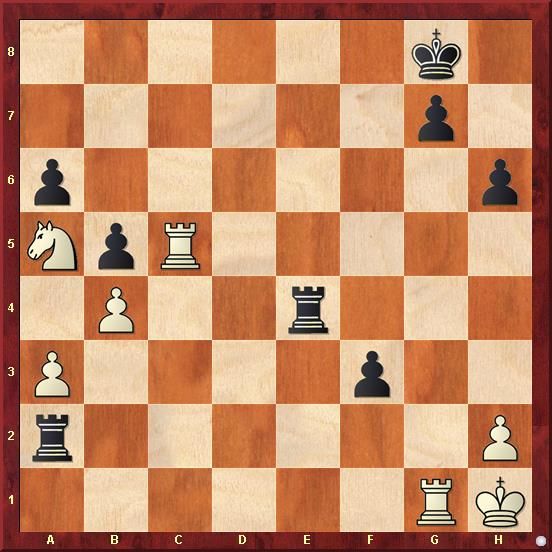
The only move to keep dynamic equilibrium for White is Rc8+! Kf7 followed by Rc3 or Rf1. The point is that the game move f2 or Ree2 are bad in lieu of Rf3+! picking up the pawn soon enough. The active role of the Black king actually hamper Black's chances of counterplay, as White can throw in checks at will, and the kingside pawns are not positioned well enough to support the far advanced f-pawn. Instead, the game was concluded rather quickly after Rh5?? f2! Rf1 Ra1!! and Nico resigned before Sam won the rook after Kg2 Rg4+ Kxf2 Rf4+.
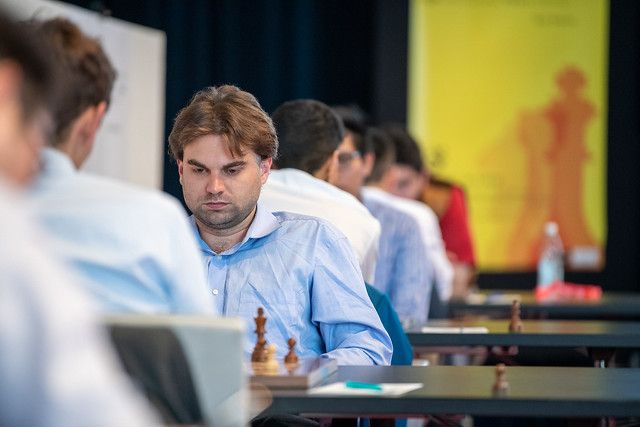
Sam's energetic play gave him his first win in the classical section. | Photo: Simon Bohnenblust / Biel Chess Festival
Vidit 1-0 Cori
The 4th Indian to cross 2700 has finally arrived to the party in Biel. Today his smooth positional play was too much for Jorge Cori. Out of a Bogo Indian, Vidit slowly built up his kingside attack while Cori couldn't do the same on the queenside. A pretty knight sacrifice sealed the deal in favour of the rating favourite soon after. Some highlights now:
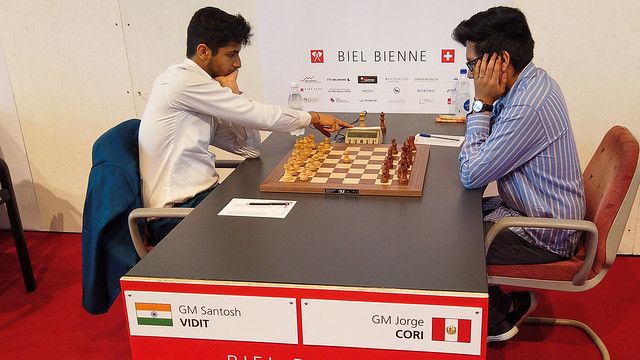
A lesson in slow burner attacks was Vidit's objective today! | Photo: Simon Bohnenblust / Biel Chess Festival
Vidit-Cori
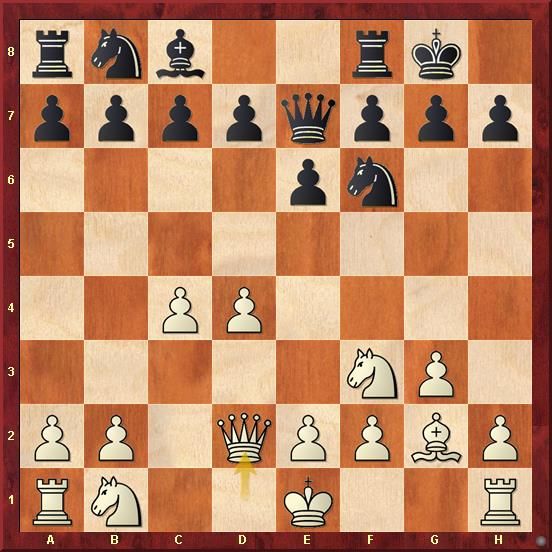
The Bogo Indian is a respected opening but against a positional player like Vidit, it is not the best opening to choose
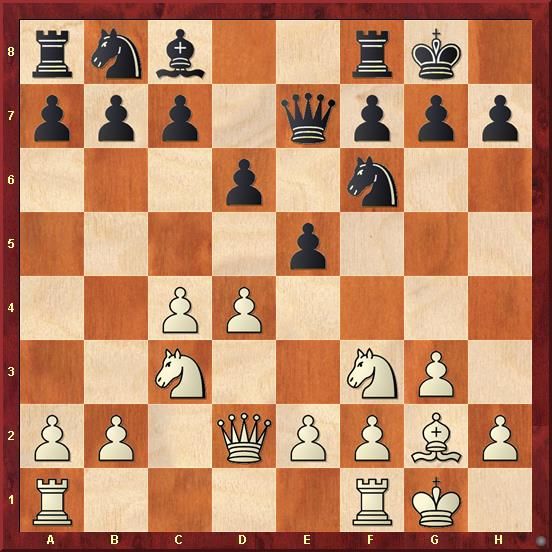
Here Cori went ...Nc6 and was soon under pressure after Nd5
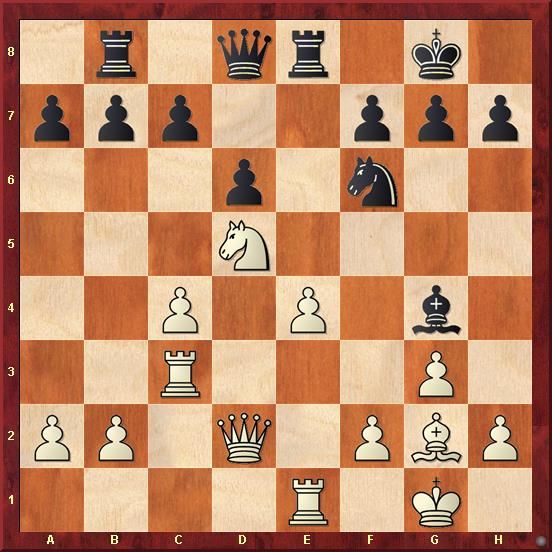
From here it is just a masterclass in attack from Vidit. White's slow burner on the kingside is underestimated by all engines, but as a human I would start to feel really scared for my king. Black is stuck passively on his side of the board without counterplay.

With such centralised pieces, White's position looks commanding. It was time for Black to stir somethings up on the queenside with a4!? b4 c6!. Though White is better after Bf1, a3! starts some serious action on the queenside, intending Ra4. It is not clear how the game would have finished had Black decided to play a little more aggressively. Instead, the one move threat after Rb8?! was easily neutralised after Nc3!.
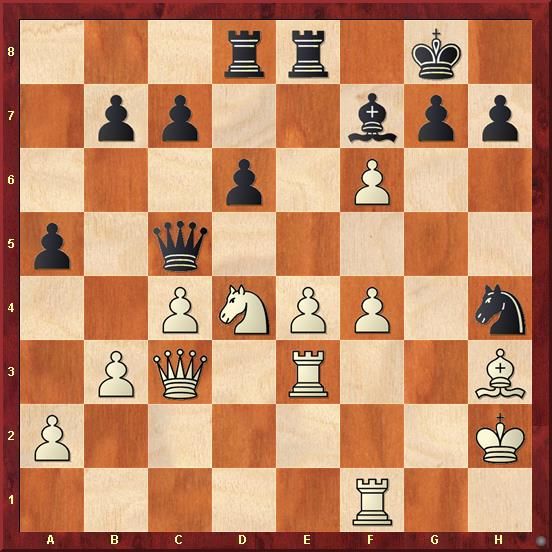
Nxh4? from Black was a serious mistake, caused by hours of passivity. After gxf6! Cori should have tried to limit the damage with g6!?. Instead, gxf6? was asking for it, and Vidit didn't hesitate.
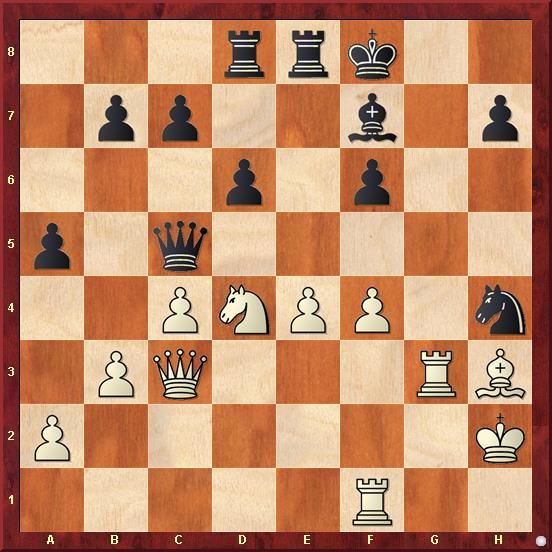
Ne6+! decides the game after Bxe6 Qxf6+ Bf7 Qh6+ Ke7 Qxh4+ Kf8 Qh6+ Ke7 Rg7! 1-0.
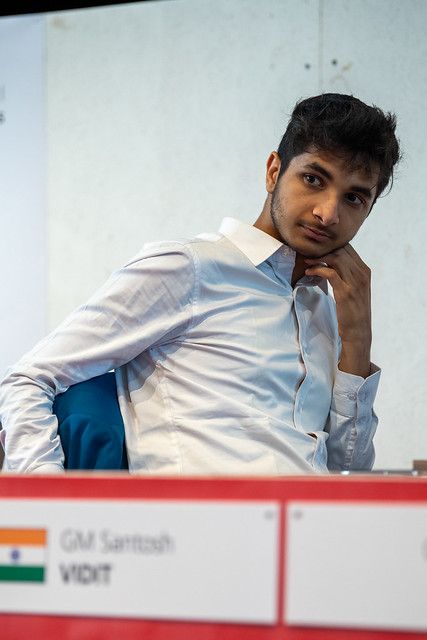
One Grandmaster who's games are more often than not under control! | Photo: Simon Bohnenblust / Biel Chess Festival
Leko 1-0 Bogner
After a bad rapid tournament, Bogner's Biel sojourn took a further turn south. After overextending his Slav Defense, he made a superlative comeback, only to throw away the game with one move, just after the time control. Here are some of the critical moments:
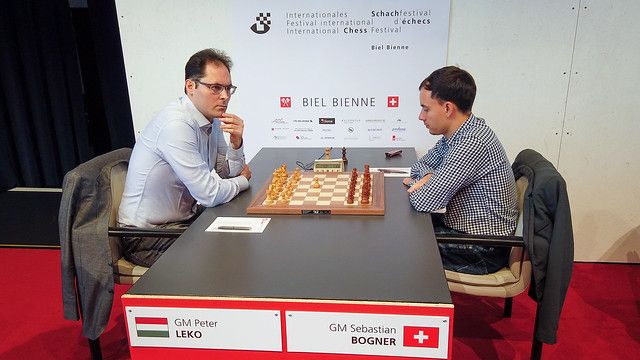
Leko's dream run continues, while Bogner will be hoping to halt his free fall as soon as possible. | Photo: Simon Bohnenblust / Biel Chess Festival
Leko-Bogner
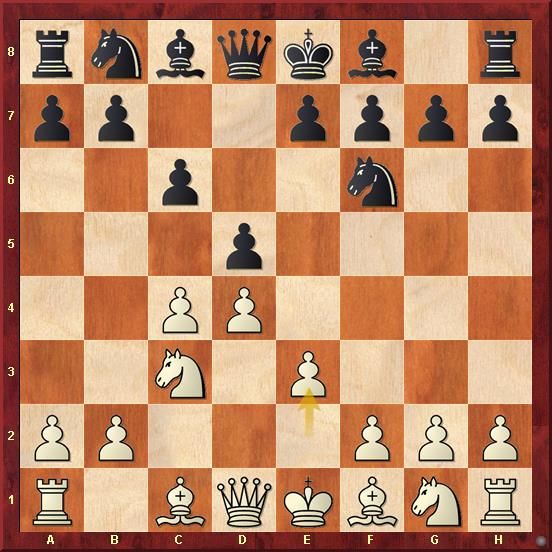
The 4.e3 Slav is the perfect territory for Leko to play to his strengths. In reply, Bogner chose the fianchetto system.
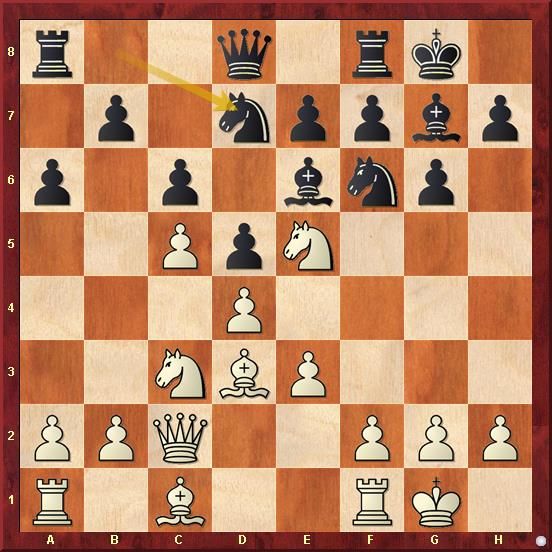
This position has seen the likes of Kasparov and Kamsky on the Black side. However, I really don't like the fact that Black's queenside lacks flexibility. Only further tests will show how sound the position actually is.
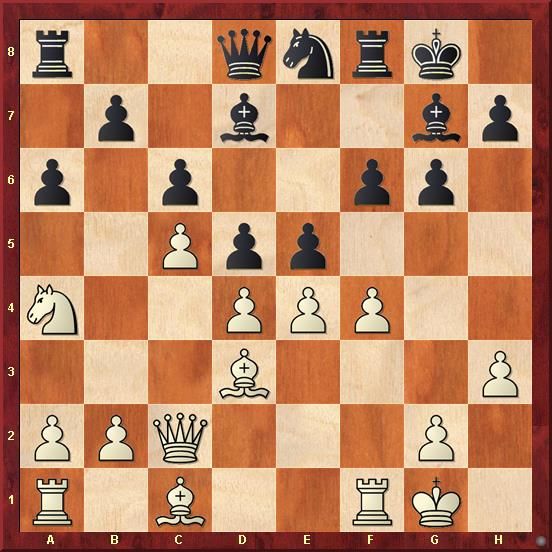
Was Bogner in his preparation here? He played dxe4 and gave up an exchange soon after. I admit that the advantage isn't as big as the engines think it is, but here Black had a very fascinating option in f5!, creating a sort of symmetry in the kingside. I'm not sure whether it is better than the game continuation, but it is definitely not worse.
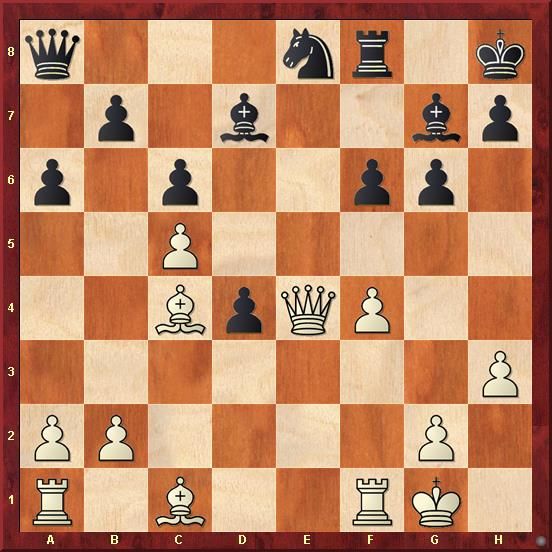
Bogner sacrificed an exchange on a8 and doesn't seem to have enough compensation for it
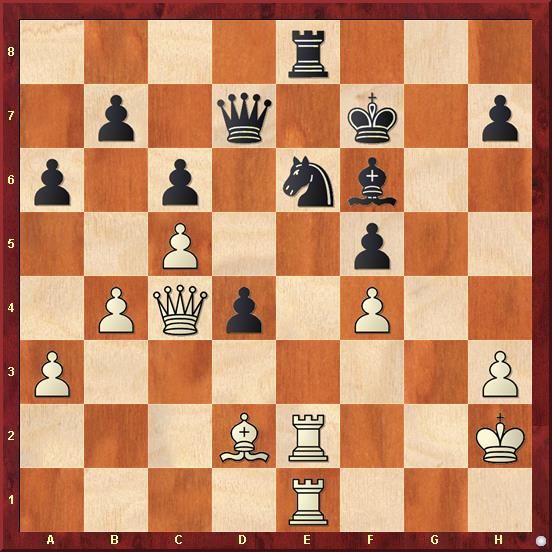
Here it was imperative to start queenside operations with a4!. I doubt Black can survive for long after that, as he is in a weird form of zugzwang! Instead, Leko allowed Black to consolidate after Qd3?! Qd5! and had to begin converting from scratch.
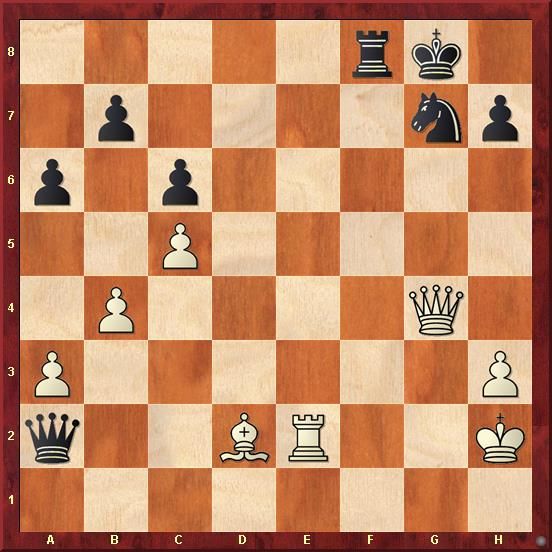
Bogner is strong enough to see Qf7! but he must have not realised that the time control was up. h5?? was a sad way to lose after the pretty Qxg7+!
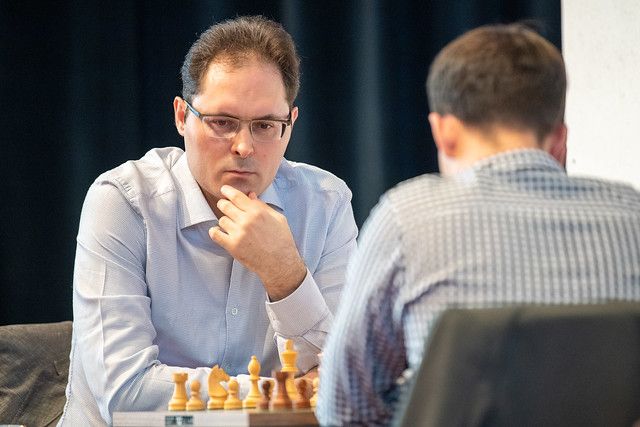
Focused, determined, and scarily strong - that's Peter Leko for you! He is showing us that he has a lot left in the tank. | Photo: Simon Bohnenblust / Biel Chess Festival
Abdusattorov 0-1 Maghsoodloo
Yet another Sicilian going against the underdog. This one was a Rauzer, and after a novelty on move 16 by Parham the game appeared to be in dynamic balance. But as is the case in such encounters, Black had a psychological advantage of
coming 'back' from a slightly worse position, and being the stronger player he soon started to press. Not long after, Abdusattorov committed a grave error, and Maghsoodloo brought the point home, though not in the cleanest fashion. Here are some of the interesting moments in the game:
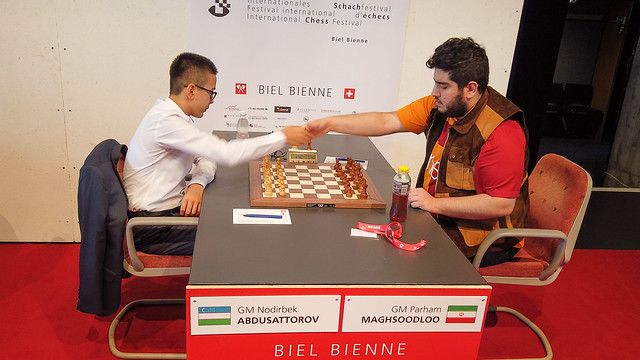
A future World Championship match? | Photo: Simon Bohnenblust / Biel Chess Festival
Abdusattorov-Maghsoodloo
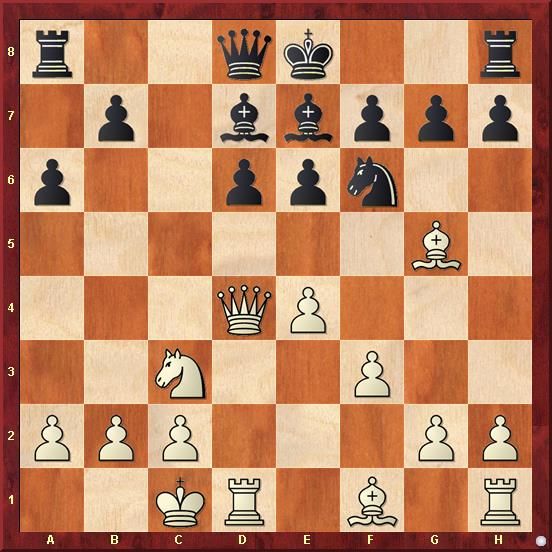
The Richter Rauzer isn't as common as it once was, but remains a serious option for Black to fight for a win.
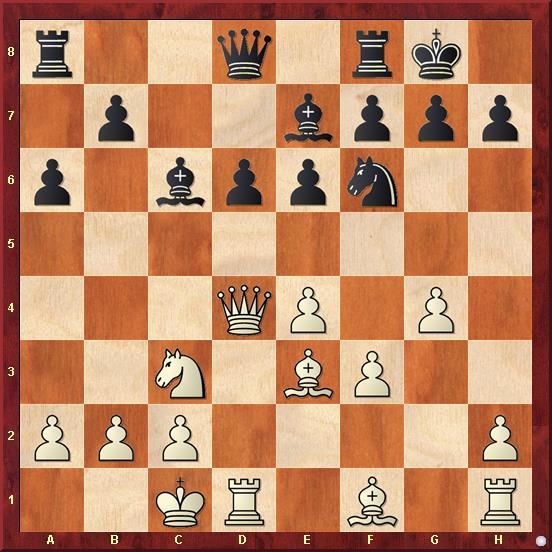
Here Nordibek went g5!? and Black was soon fine. Instead, h4! looks like a better option to me, bringing in all the artillery. It has been surprisingly underused. Perhaps not anymore after this game...
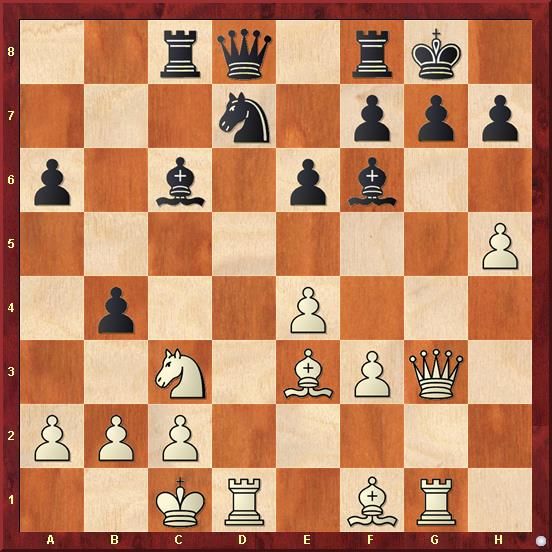
Ne2!? looks to be a better option than Bh6 ( the game move) for White, bringing in the last piece into the attack and retaining hopes of an advantage. The idea is to meet the natural Qa5 not with Kb1 (which leads to a forced draw after Ba4! [Nd4 Bxd4 Rxd4 Bxc2+ Ka1 g6 hxg6 hxg6 Rxd7 Bb3! and White has to force the draw with Qxg6!]) but with Bg5! and the threats to the Black king start to turn real.
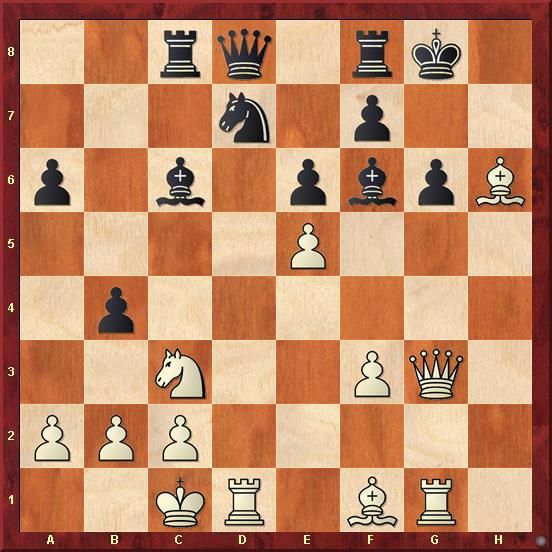
e5? was a gross miscalculation from the young phenom. Now instead of taking on e5 (which is what Parham did), the strong Bh4! wins two pieces for the rook. The idea is to start a ferocious counterattack after Qg4 bxc3 Bxf8 Kxf8! Qb4+ Kg8 Qxc3 Bd5! with a decisive advantage.
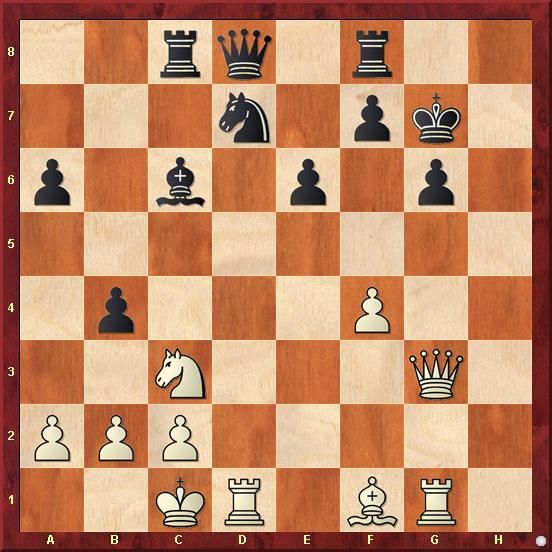
It was time to apply the emergency breaks with Bxa6! bxc3 Qxc3+ Qf6 Qxf6+ Kxf6 Bxc8 Rxc8 Rd4. Black has an advantage, but the 3 connected passed pawns on the queenside means that conversion will not be easy. Instead, after Ne2? Parham began his counterattack with Qf6!
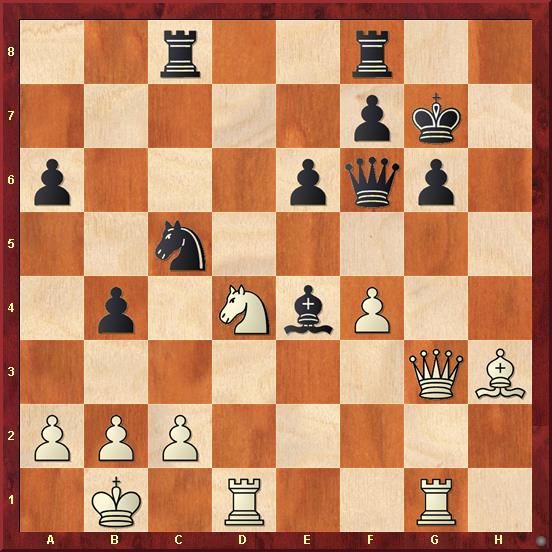
Instead of the natural Rfd8?! that Parham played in the game, Black had the super strong Na4!, threatening to take on b2 and then on c2 with the rook. White is forced to play Qb3, but now Rfd8! wins a full piece and soon the game will be decided. After the game move, Nodirbek only resigned on move 41.
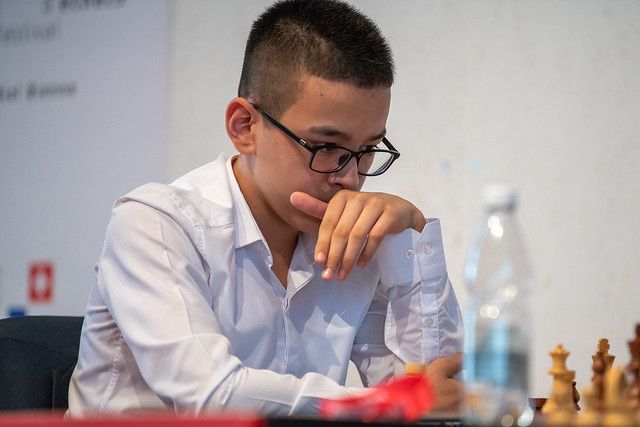
This young super talent has played admirably so far. How far can he go in his biggest challenge yet? | Photo: Simon Bohnenblust / Biel Chess Festival
Here are the standings, where each player retains their position in lieu of results going as planned for some ( and not so for others):
Overall-Ranking
| Rank | Name | Games | Classic | Rapid | Blitz | Total |
|---|
| 1 | GM Peter Leko | 8 | 3 | 10 | 0 | 13 |
| 2 | GM Sam Shankland | 8 | 3 | 9 | 0 | 12 |
| 3 | GM Parham Maghsoodloo | 8 | 3 | 8 | 0 | 11 |
| GM Santosh Vidit | 8 | 3 | 8 | 0 | 11 |
| 5 | GM Jorge Cori | 8 | 0 | 7 | 0 | 7 |
| 6 | GM Nico Georgiadis | 8 | 0 | 6 | 0 | 6 |
| 7 | GM Nodirbek Abdusattorov | 8 | 0 | 5 | 0 | 5 |
| 8 | GM Sebastian Bogner | 8 | 0 | 3 | 0 | 3 |
The trends are now clearly set, and it remains to be seen whether they continue to remain the same.
About the Author
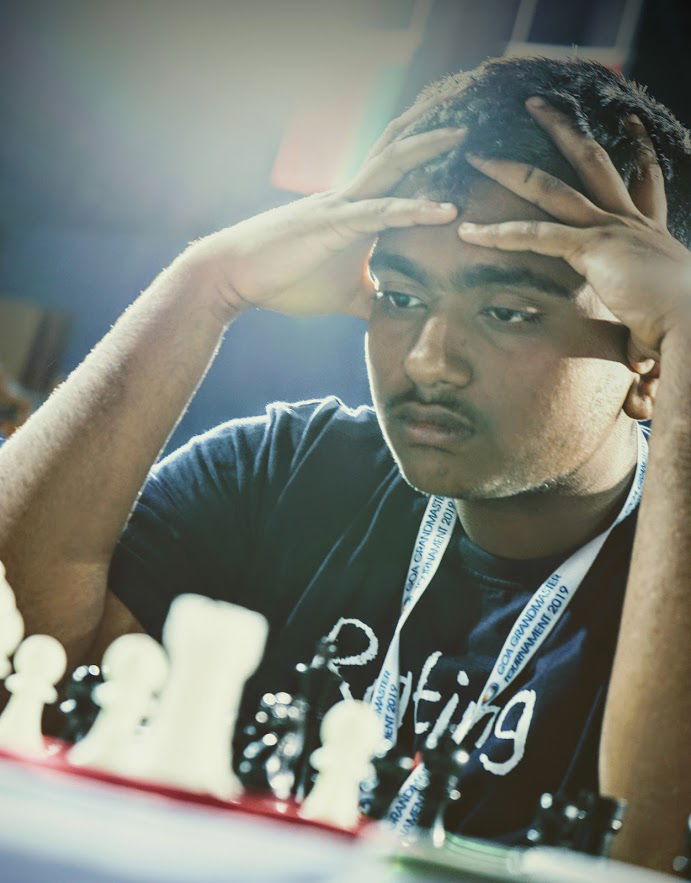
Tanmay Srinath is an 18-year-old chess player from Bangalore, Karnataka, currently pursuing both chess and engineering at BMSCE Bangalore. Tanmay is also a Taekwondo Black Belt, who has represented the country in an International Tournament in Thailand. He is a big fan of Mikhail Tal and Vishy Anand, and sincerely believes in doing his bit to Power Chess in India!











































